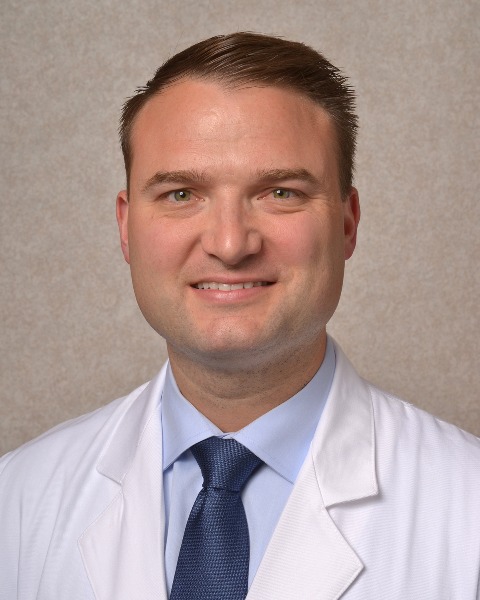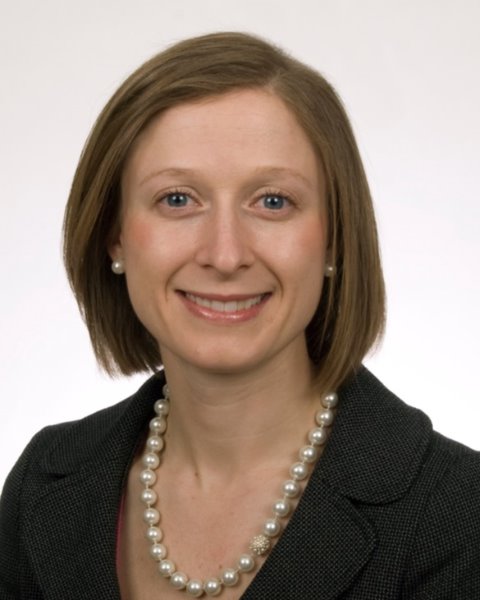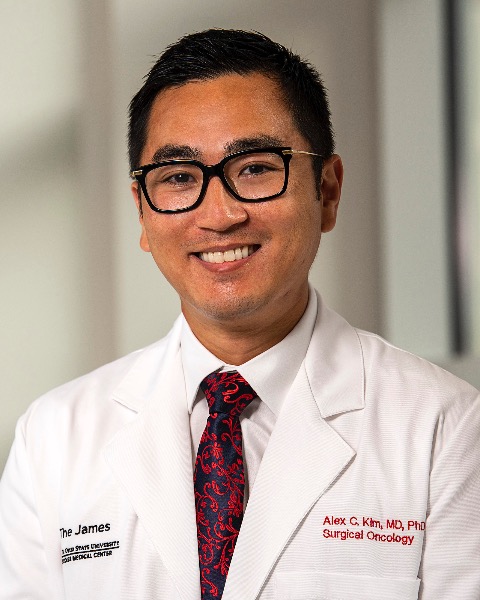Team Science in Surgical Oncologic Care
E291: Early Palliative Care following Aborted Cancer Surgery: Preliminary Results of a Prospective Clinical Trial

Jordan M. Cloyd, MD
Surgical Oncologist
Division of Surgical Oncology, The Ohio State University Wexner Medical Center, Columbus, OH, United States
Columbus, Ohio, United States
Jordan M. Cloyd, MD
Surgical Oncologist
Division of Surgical Oncology, The Ohio State University Wexner Medical Center, Columbus, OH, United States
Columbus, Ohio, United States
Jordan M. Cloyd, MD
Surgical Oncologist
Division of Surgical Oncology, The Ohio State University Wexner Medical Center, Columbus, OH, United States
Columbus, Ohio, United States- RK
Rakhsha Khatri, n/a
Research Assistant
The Ohio State University Wexner Medical Center, United States - AS
Angela Sarna, n/a
Research Coordinator
The Ohio State University Wexner Medical Center, United States - LS
Lena Stevens, n/a
Research Assistant
The Ohio State University Wexner Medical Center, United States 
Mary E. Dillhoff, MD
Surgical Oncologist
The Ohio State University Wexner Medical Center
Columbus, Ohio, United States
Alex C. Kim, MD, PhD (he/him/his)
Surgical Oncologist
UT Southwestern Medical Center
Dallas, Texas, United States
Timothy M. Pawlik, MD, PhD, MPH, MTS, MBA, FACS, FRACS (Hon.), FRCSEd (Hon.)
Surgical Oncologist
The Ohio State University Wexner Medical Center
Columbus, Ohio, United States.jpg)
Aslam Ejaz, MD
Surgical Oncologist
The Ohio State University Wexner Medical Center, United States- SW
Sharla Wells-Di Gregorio, PhD
Associate Professor
The Ohio State University Wexner Medical Center, United States - SK
Sachin Kale, MD
Associate Professor
The Ohio State University Wexner Medical Center, United States - ES
Erin Scott, MD
Assistant Professor
The Ohio State University Wexner Medical Center, United States
ePoster Abstract Author(s)
Submitter(s)
Author(s)
Although surgery is generally necessary for curative-intent treatment of most solid organ cancers, resection is occasionally aborted due to intraoperative findings. Following aborted cancer surgery, patients have unique and complex care needs that specialized palliative care (PC) providers may be best equipped to manage. We hypothesized that early ambulatory PC referral following aborted cancer surgery would be feasible and acceptable.
Methods: This single-institution prospective clinical trial enrolled adult patients with gastrointestinal or hepatopancreatobiliary cancer and no prior PC exposure whose curative-intent oncologic surgery was unexpectedly aborted. The primary endpoint was feasibility and acceptability of completing an ambulatory PC consultation within one month of enrollment; subsequent visits with PC occurred as needed. Secondary outcomes included changes in standardized measures of quality of life (FACT-G) and anxiety/depression (HADS) during the 3-month follow-up.
Results:
Between 1/2022 and 9/2023, among 38 potentially eligible patients who experienced aborted cancer surgery, 23 were enrolled (Figure 1). Mean age was 65.4 ± 10.3 years, 65.2% were male, and 86.9% were white. The most common types of cancers were pancreatic (43.5%), hepatobiliary (17.4%), and colorectal (17.4%) whereas the most common planned operations included hepatectomy (43.5%) and pancreatoduodenectomy (39.1%). Reasons for aborting surgery were occult metastatic disease (47.8%) and local unresectability (47.8%). Mean baseline HADS anxiety and depression subscores were 5.4±3.8 and 4.3±4.1, respectively while FACT physical, social, emotional, functional well-being, and overall scores were 21.0±5.3, 23.6±4.2, 17.6±4.8, 17.3±7.0, and 79.6±15.8, respectively. Of the 23 patients, 15 (65.2%) completed PC consultation a mean 23.4±11.6 days after enrollment. Of the 8 (34.8%) who did not, reasons included patient preference (n=4), withdrawal from study (n=1), lost to follow-up (n=1), and required inpatient PC prior to discharge (n=1). Only 11 of 23 (47.8%) met the primary endpoint of consultation within one month. Of the 14 patients who completed 3 month follow-up, mean HADS and FACT scores did not significantly change (p >0.05).
Conclusions: Barriers to early ambulatory palliative care consultation exist after aborted cancer surgery. Given the unique and complex care needs of this patient population, additional research is needed on optimal supportive care strategies.
Learning Objectives:
- Upon completion, participants will be able to define potential barriers to early ambulatory palliative care following aborted cancer surgery
- Upon completion, participants will be able to describe patient characteristics at risk for aborted cancer surgery
- Upon completion, participants will be able to characterize quality of life and patient experiences after aborted cancer surgery
